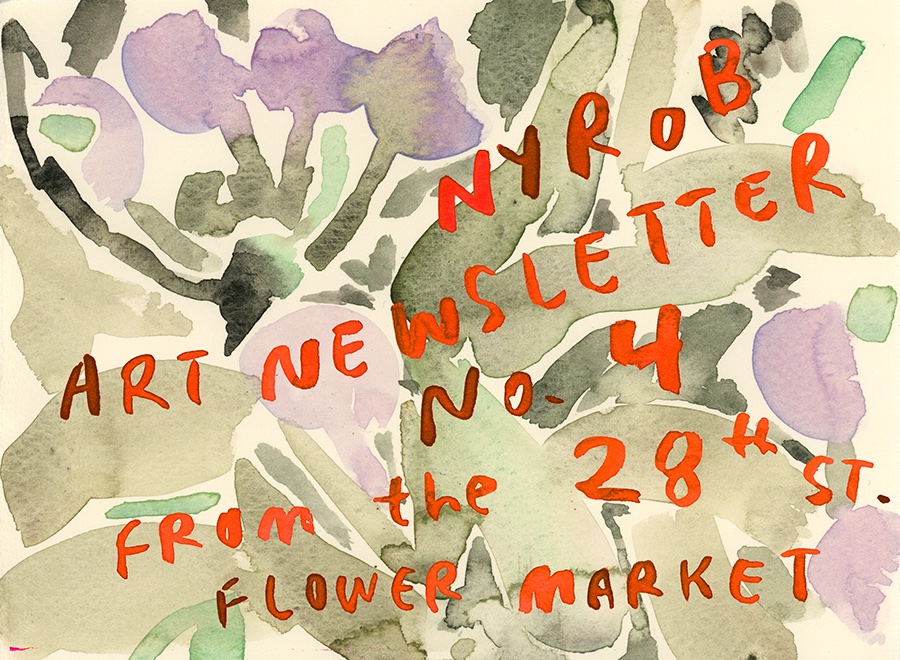A dispatch from our Art Editor on the art and illustrations in the Review’s December 22 issue.
As the year’s end approaches I’m at Manhattan’s 28th Street flower market, where branches of shiny persimmons, toe-sized kumquats, and burnished pomegranates are arrayed in cardboard boxes. Bunches of purple viburnum and privet berries, white tallow berries, leafy eucalyptus, holly, and mistletoe are bound in elastic bands and crammed beside blood-red peonies, imported papery poppies, and leafy geraniums. The greenery heralds artful gatherings and festive tables. Even the fake flora looks fun; I pass a bucket of berries spray-painted ice blue, dyed-copper pepper trees, and branches flocked in white.

I bring a fir home, cue up an old holiday playlist, and start to trim the tree. I think of the giant Christmas tree in the home of Jewish intellectuals from the opening act of Tom Stoppard’s play Leopoldstadt, of myriad family dramas and tragedies, and of what the heck to send to my family in Canada.

Our Holiday Issue closed the night before American Thanksgiving. The cover illustration is an eerie winter scene featuring a pair of snow people, a small menagerie of vaguely menacing animals, and the howling North Wind, painted and hand-lettered by the artist Marcel Dzama. He completed it while installing a show of new paintings in London. The snow couple resemble his “Melting Snowmen Cannisters,” an artist’s edition of ceramic containers that he produced in 2005. (I interviewed Dzama in early December, and we talked about the Winnipeg landscape.)

The issue felt like a reunion of some of our favorite illustrators. Harriet Lee-Merrion, who has contributed sensitive portraits of Kazuo Ishiguro, Amia Srinivasan, Sarah Manguso, and Jean Stafford, gave us an unusually sweet portrait of Cormac McCarthy for Michael Gorra’s review of The Passenger and Stella Maris. (I’m drawn to Lee-Merrion’s beautiful prints of bathers and pools for my swimmer friends.) Vivienne Flesher, whose art always feels warmly alive—like this smoky Patricia Highsmith she made last November—drew a stern John Edgar Wideman for Tobi Haslett’s wide-ranging essay about Wideman’s life and novels.

Rebecca Giggs wrote about Rachel Carson’s Sea Trilogy, and Carson’s portrait is by the Italian painter Andrea Ventura. Illustrators often have a limited number of reference images to work from, and while the famous writer and marine biologist was well documented, so many of the available photographs of her still feel very much of their time. By depicting Carson in a striped sailor shirt, Ventura brought a youth and crackle to the portrait, while obliquely referencing a life lived thinking of the ocean. Andrea and his twin brother, Paolo, a photographer, have just published a beautiful new book that reimagines Napoleonic battles.

Leah Reena Goren, who made portraits of the Los Angeles poets Boris Dralyuk and Adam Kirsch for the October 20 issue, did a simple watercolor of Hiroko Oyamada for Nathaniel Rich’s review of her three novels. It nevertheless managed to evoke the uncanny settings of her stories. I’m giving Goren’s book Catlady to my catdaughter this year. Stacy Schiff writes about Judith Thurman’s collection of essays, A Left-Handed Woman, and Paris-based illustrator Annabel Briens’s straightforward likeness reflects Schiff’s description of Thurman’s “carbon-into-diamonds” distillations.

For Merve Emre’s review of Matthew Denison’s unauthorized biography of Roald Dahl, the Bristol-based illustrator Anna Higgie portrays the writer in his cottage, with her characteristic detailing and a wonderfully tea-stained palette. While I always liked Dahl’s crude sense of justice, I appreciate Emre’s exasperated reappraisal of his obvious malice, cruelty, and sense of superiority. I imagined her as another of his foot-stamping protagonists, finally standing up to this kid-lit goliath and his reign of terror over unexceptional children and tone-deaf adults with his painful, bullying wit. (I’m considering giving my brother Anna Higgie’s set of three Hungarian paprika prints.)
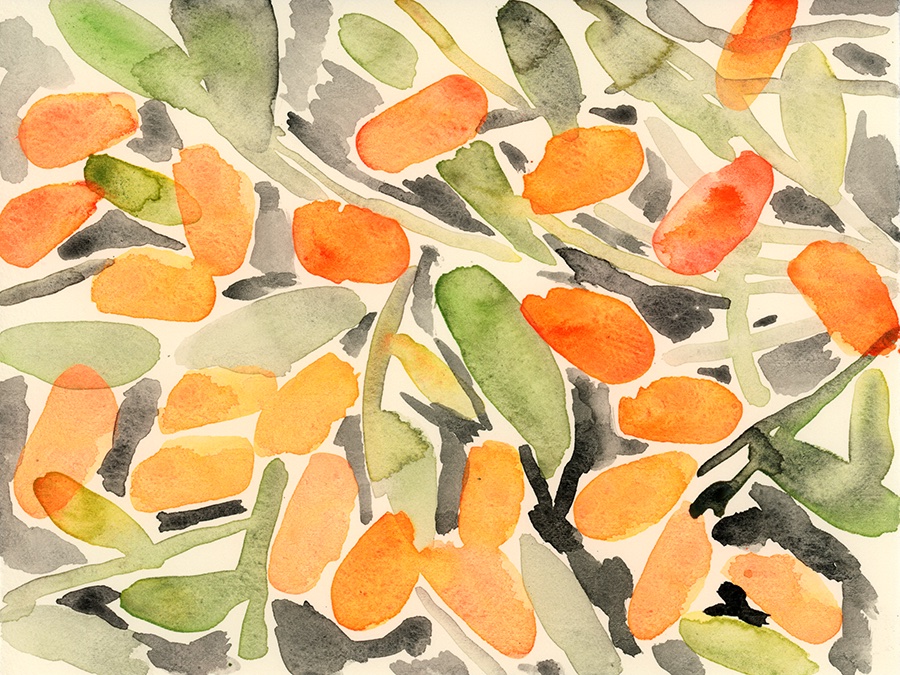
When we have a last-minute addition to the issue and time is tight, I often pinch-hit a portrait myself, which I’ve done in the past for Hilary Mantel and Jamil Jan Kochai. In this case, I painted the Egyptian poet Iman Mersal, for Ange Mlinko’s wonderful review of the first English translation (by Robyn Creswell) of Mersal’s book Threshold.
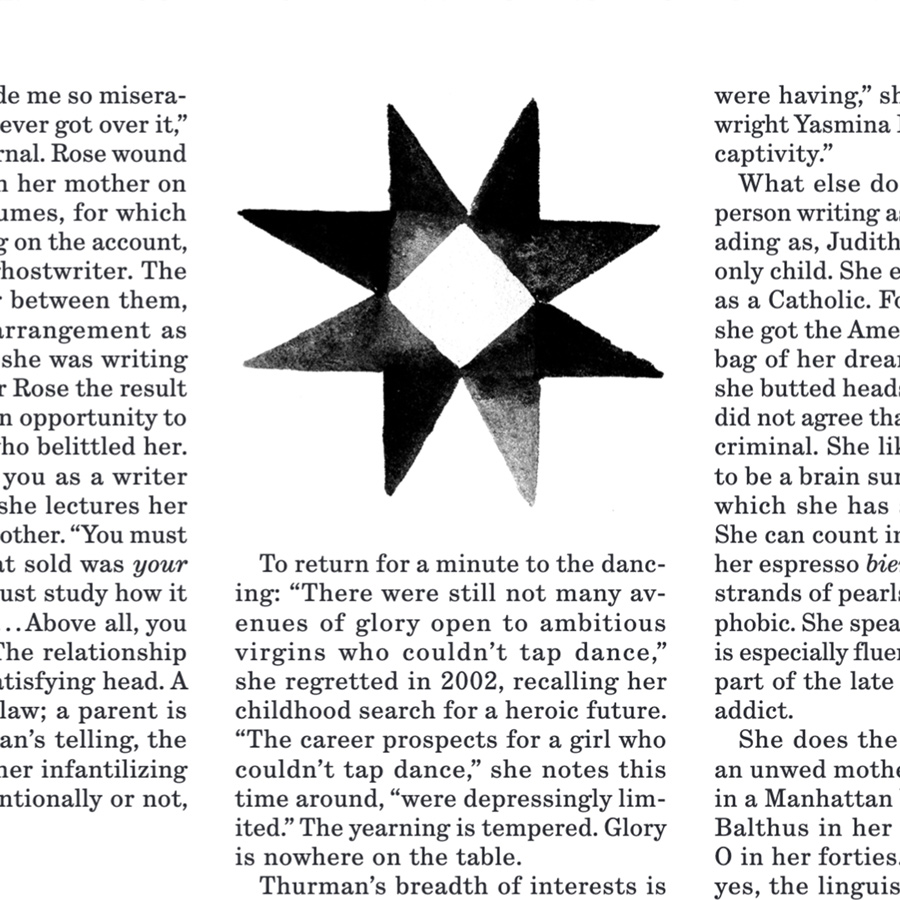
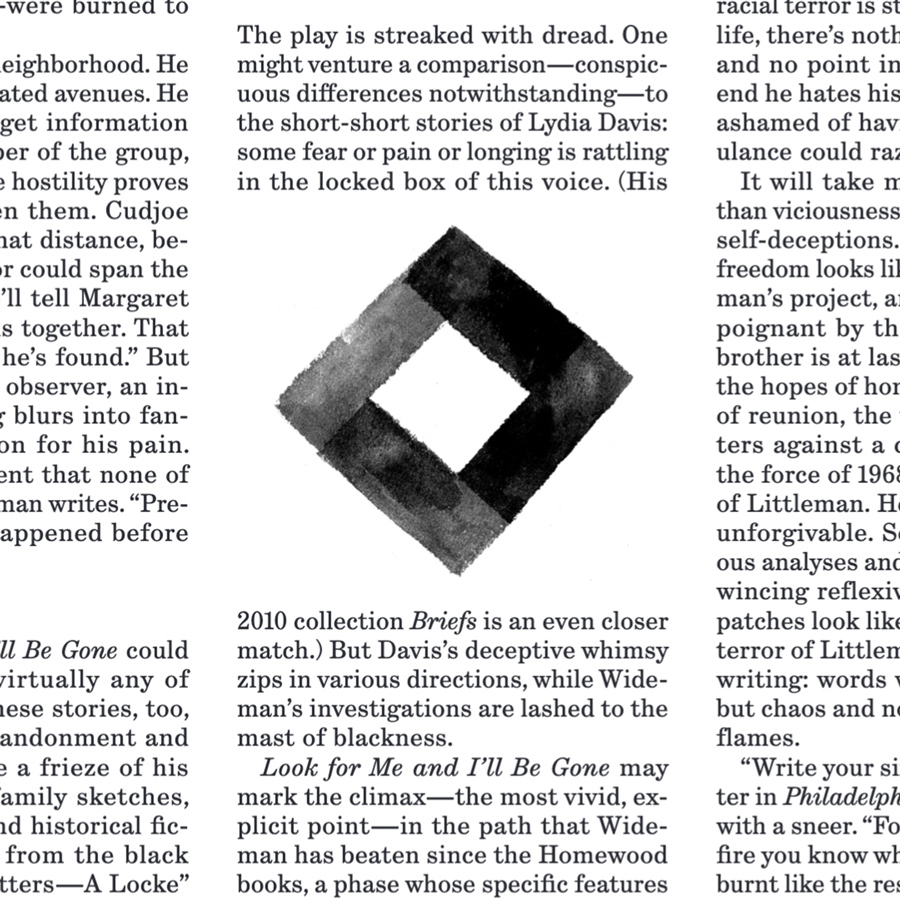
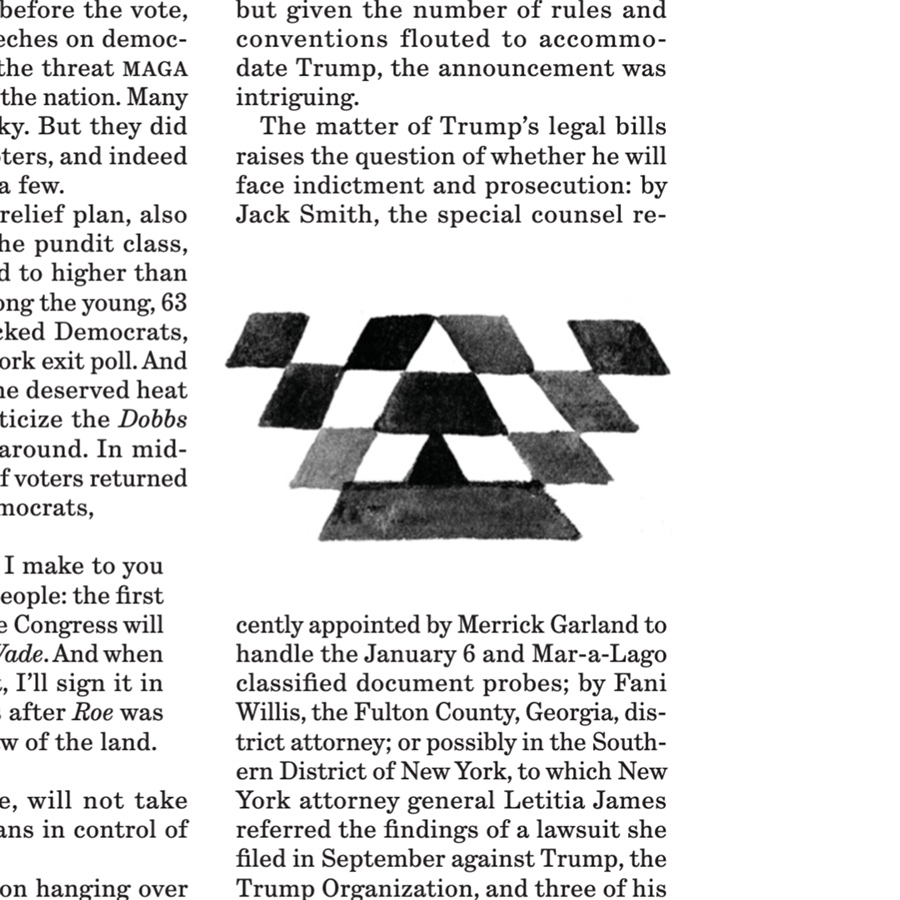
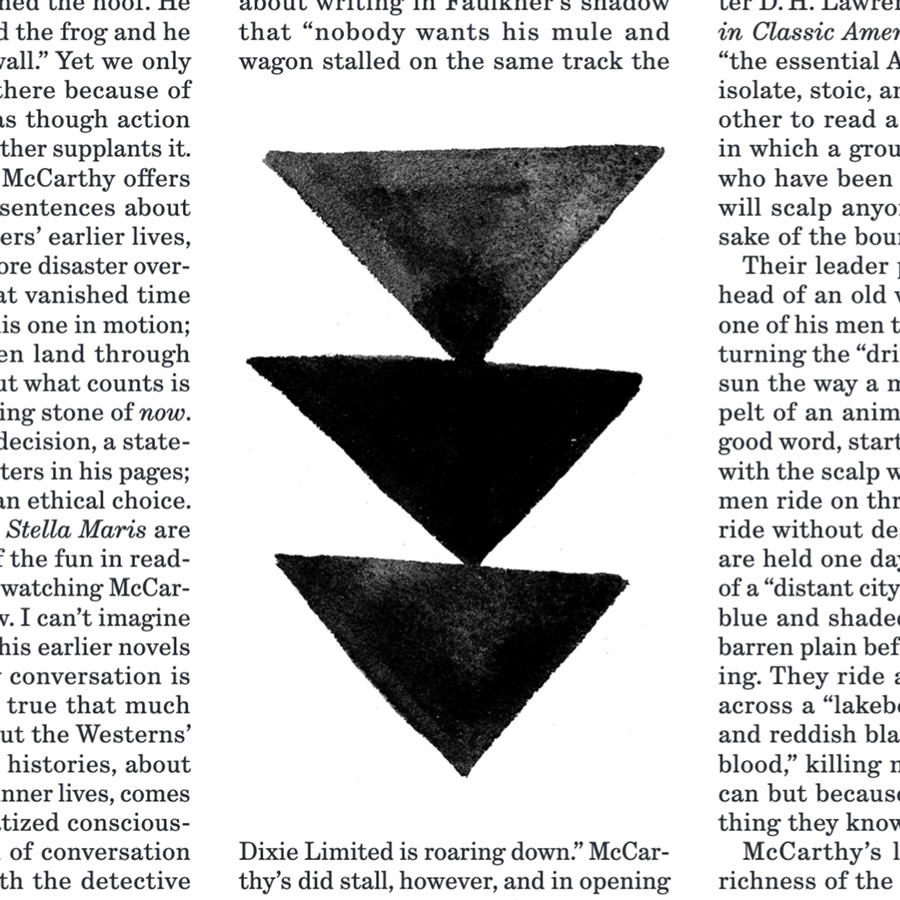
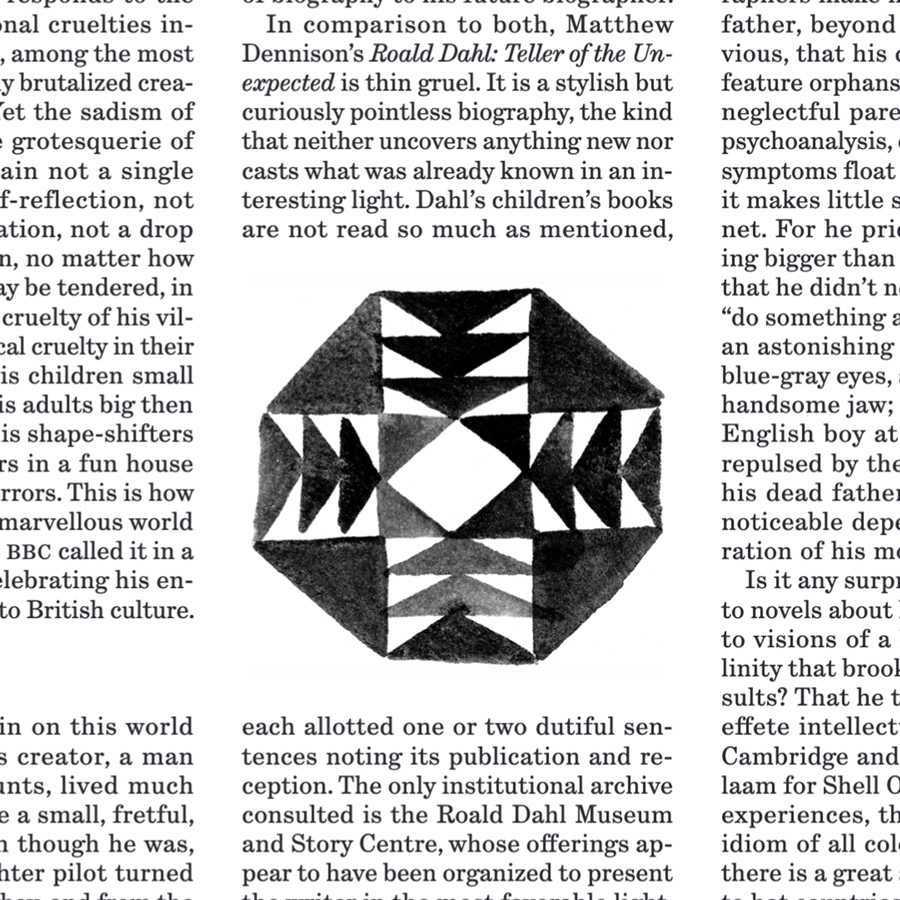
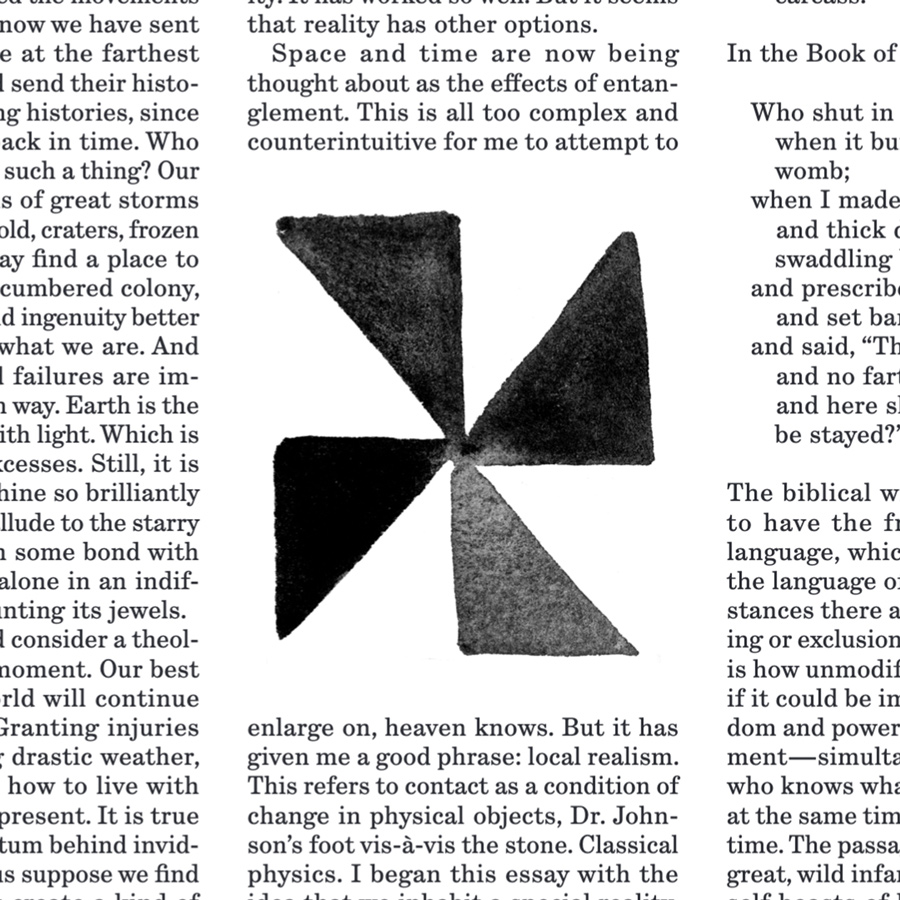
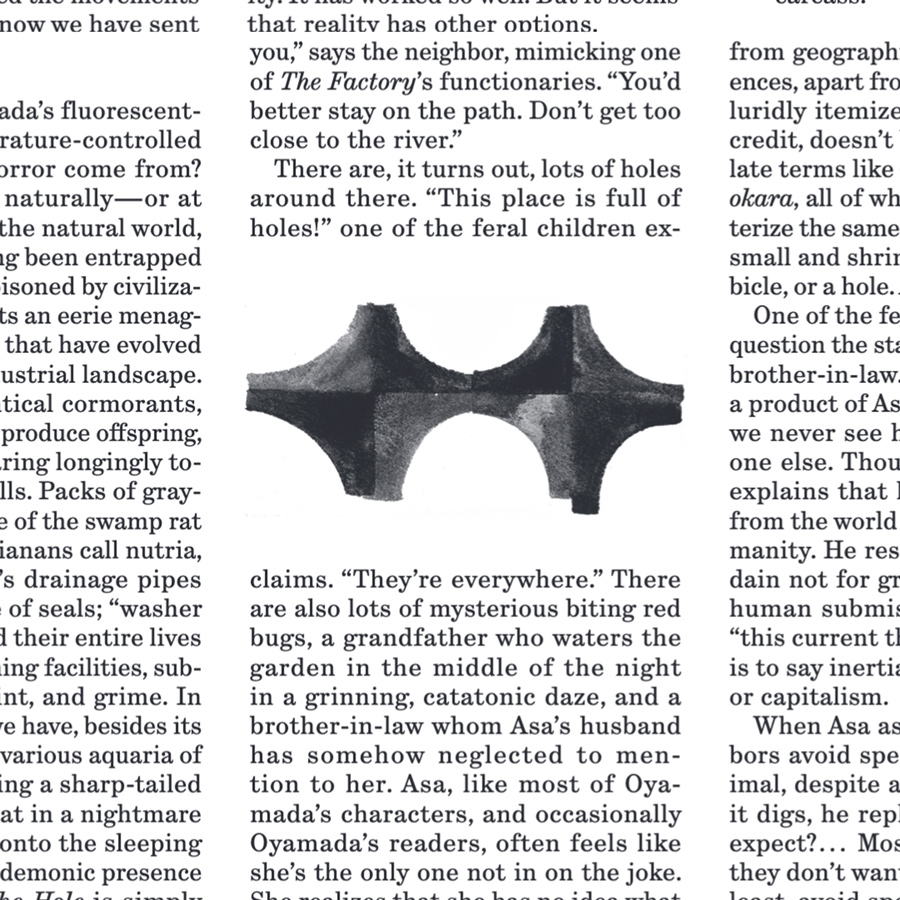
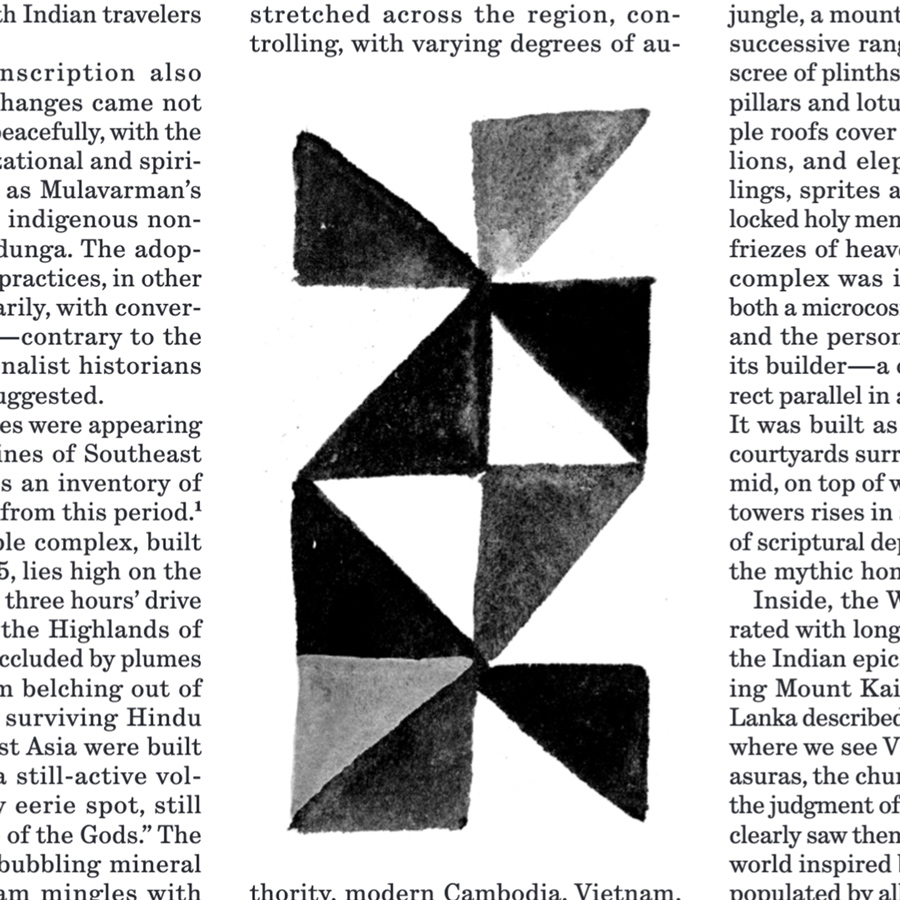
The series art in the issue is by our Spring Books cover artist, Carson Ellis, whom I approached after seeing her quilting work, with its piecemeal, snowflake-adjacent shapes. When I asked if the series was titled, she considered Quilt Squares but ultimately insisted on leaving it Untitled. Of her many books, posters, cards, and prints, her secular rabbit holiday notecard feels particularly cheerful.

Fine art in the issue includes a landscape under a streaking double comet by the Canadian artist Nancy Friedland, for Marilynne Robinson’s essay about Scripture and science. The painting is titled Let me see your beauty when the witnesses are gone, after Leonard Cohen’s “Dance Me to the End of Love.” Friedland’s winter night scenes and animals caught in headlights on lonely roads make me homesick. The Australian artist Clara Adolphs contributed Self Inside, a 2017 oil painting of a woman contemplating her reflection, for an exchange of letters about womanhood between Natalia Ginzburg and Alba de Céspedes. (We featured a 2019 Adolphs painting, Close, on the cover of our March 24 issue.)
Advertisement

A quick trip to London over our Thanksgiving break made it possible for me to catch the William Kentridge show at the Royal Academy. His enormous ink and text paintings of trees and cut flowers put me in mind of Emre’s incisive reading of Dahl’s obsession with scale: “making it big and making it small and not noticing or caring who gets hurt in the process.” I was able to see some very good, unusually small Cecily Brown paintings at Thomas Dane Gallery, and I spent time in the stacks at the London Library before flying back to the chilly end of a dark year in New York. A coffee and an early morning walk along the pine garlands and pomegranates of 28th Street far outdoes the Rockefeller tree and the Bergdorf windows, in my book. I think of a line from Imam Mersal’s poetry, quoted in Mlinko’s review, in which Mersal’s great aunt sends her off with an Egyptian expression: “May it be a happy threshold.”


